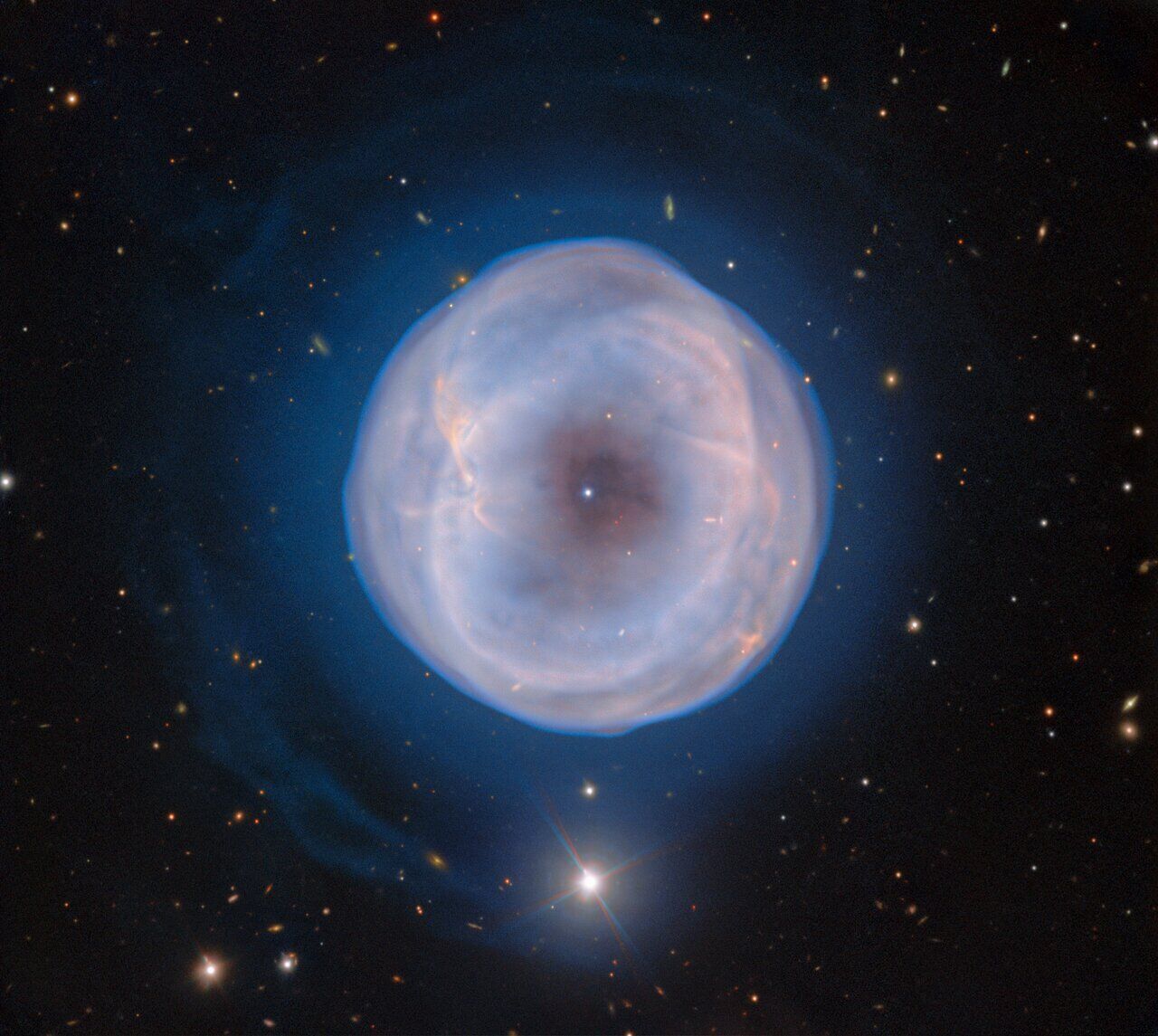News
Distant elusive nebula shows scientists the future of our solar system
The Gemini Southern Telescope has allowed scientists to see the distant planetary nebula IC 5148, which formed around the burned-out core of a dead star. In billions of years, distant observers will see our solar system very similar to this nebula.
According to Inverse, IC 5148, also known as the Spare Tyre Nebula, is located at a distance of about 3,000 light-years in the constellation of Crane. The Gemini telescope, which allowed scientists to see this beauty, is located high in the Chilean Andes (to see the photo, scroll to the end).
Around the barely visible burned-out core of the dead star, shimmering layers of gas have formed an almost perfect sphere, somewhat reminiscent of a car wheel or a giant crystal ball floating in space. If you use a little imagination, you can see that the nebula looks like a giant cosmic eye peering into infinity.
Despite the visual tranquility of this nebula, it is actually quite turbulent, as gas clouds are released at a speed of about 180,000 kilometers per hour.
Although IC 5148 belongs to planetary nebulae, it is in no way related to planets. The name of such objects arose from a mistake made during observations. In 1894, when astronomers first noticed these nebulae, they called them planetary nebulae because they looked like giant planets. Despite the fact that we now realize that these are not planets at all, but rather remnants of stars, scientists continue to use the wrong name. Probably out of respect for the discoverers.
As for the similarity of the IC 5148 nebula to the future of our solar system. It really exists, although it is quite conditional.
In about 5 billion years, our Sun will convert the last of its hydrogen reserves into helium. After that, the gravitational force, which was maintained by nuclear reactions in the heart of the star, will disappear, and the Sun will collapse into itself.
As a result, the middle layers of the star will be crushed with such force that hydrogen synthesis will start again. But in the absence of gravity, this will cause the Sun's outer layers to swell like a fireball to gigantic proportions, swallowing up the planets of the inner solar system, including the Earth, up to Mars.
Eventually, the dying Sun will lose all of its outer layers and send a hot, pulsating gas into space, hundreds of thousands of times the mass of the Earth.
The center of the system will then be left with a white dwarf, the dead core of the Sun, which will burn and slowly cool down, surrounded by a gas sphere that will expand into space.
Space researchers of the future will be able to find molecules in this gas that were once part of our Earth, which was swallowed up by the Sun.
Earlier, OBOZ.UA told what will happen when the Milky Way crashes into Andromeda.
Subscribe to the OBOZ.UA channels in Telegram and Viber to keep up with the latest events.




























